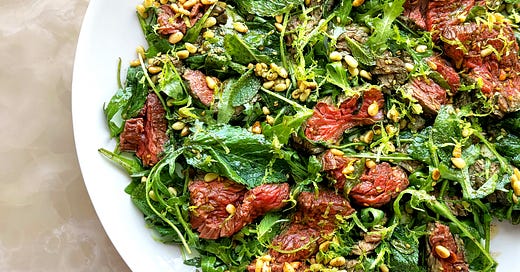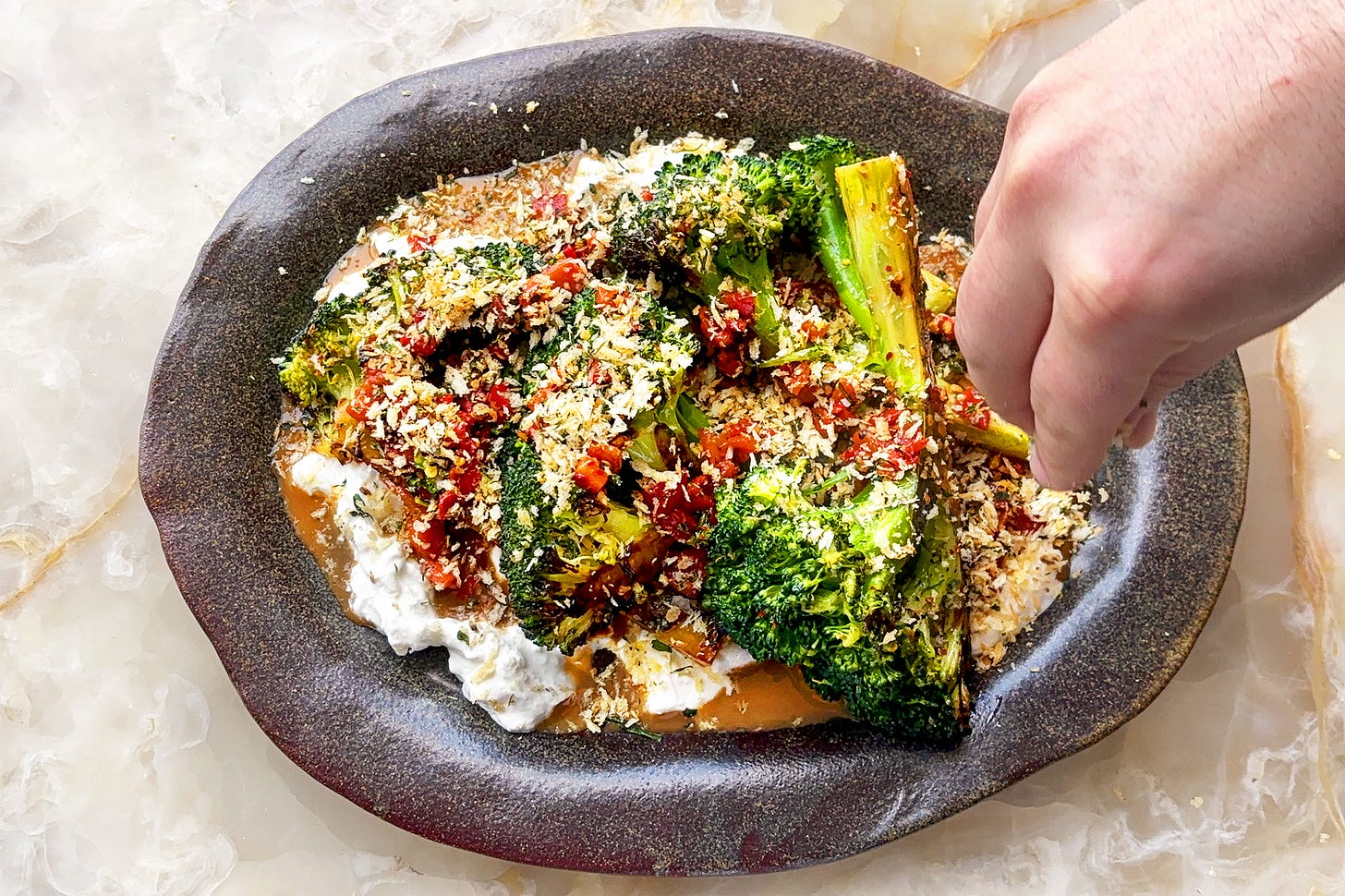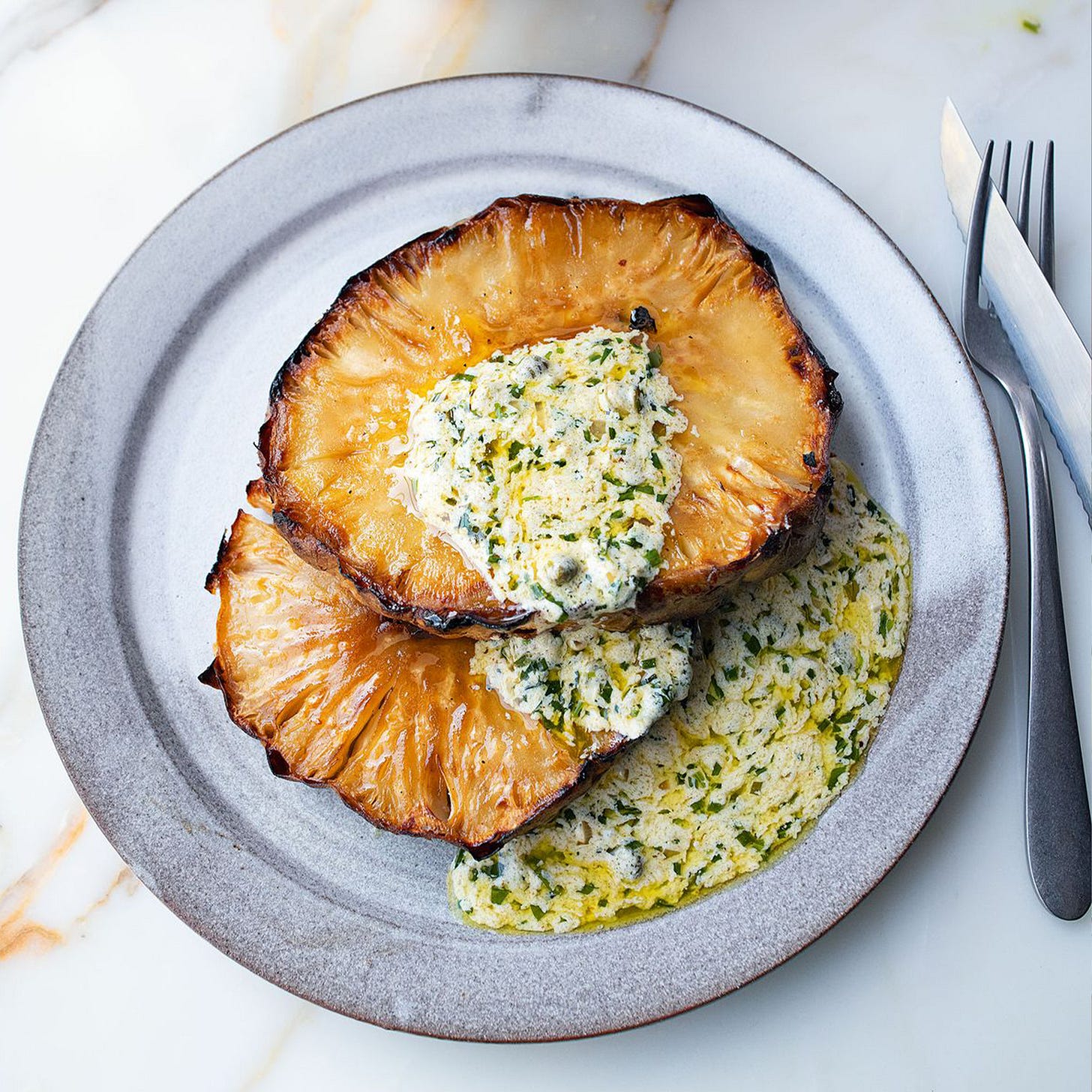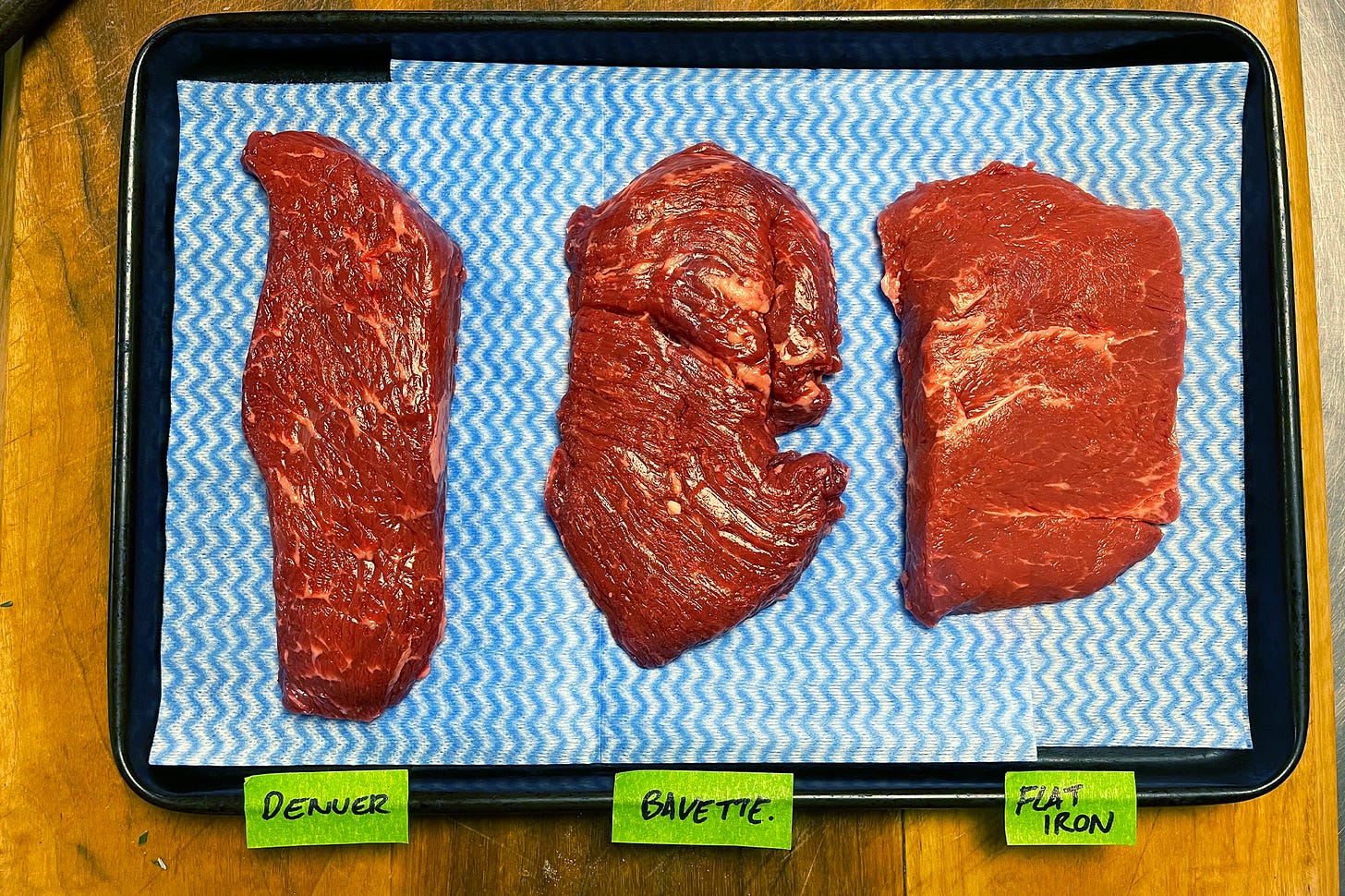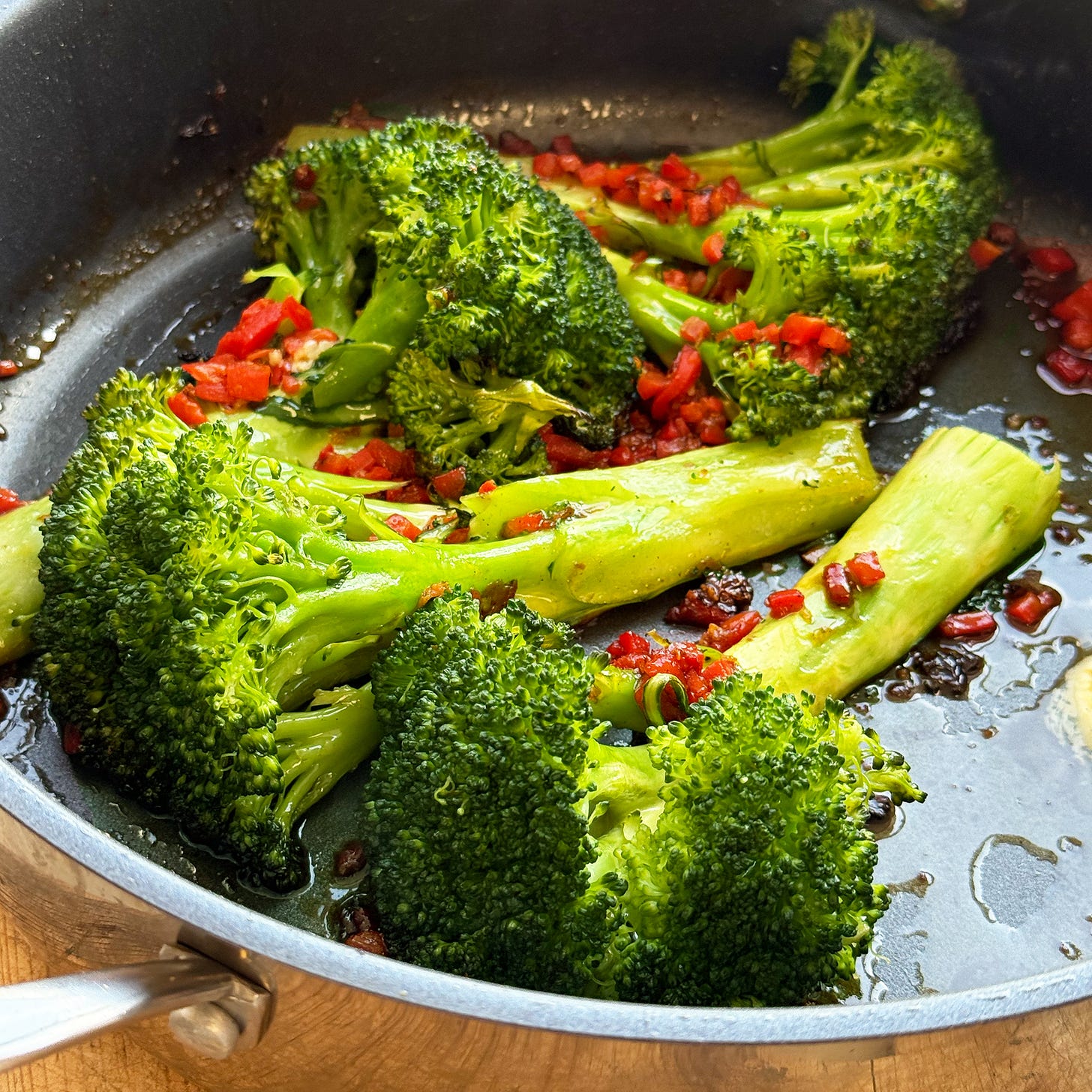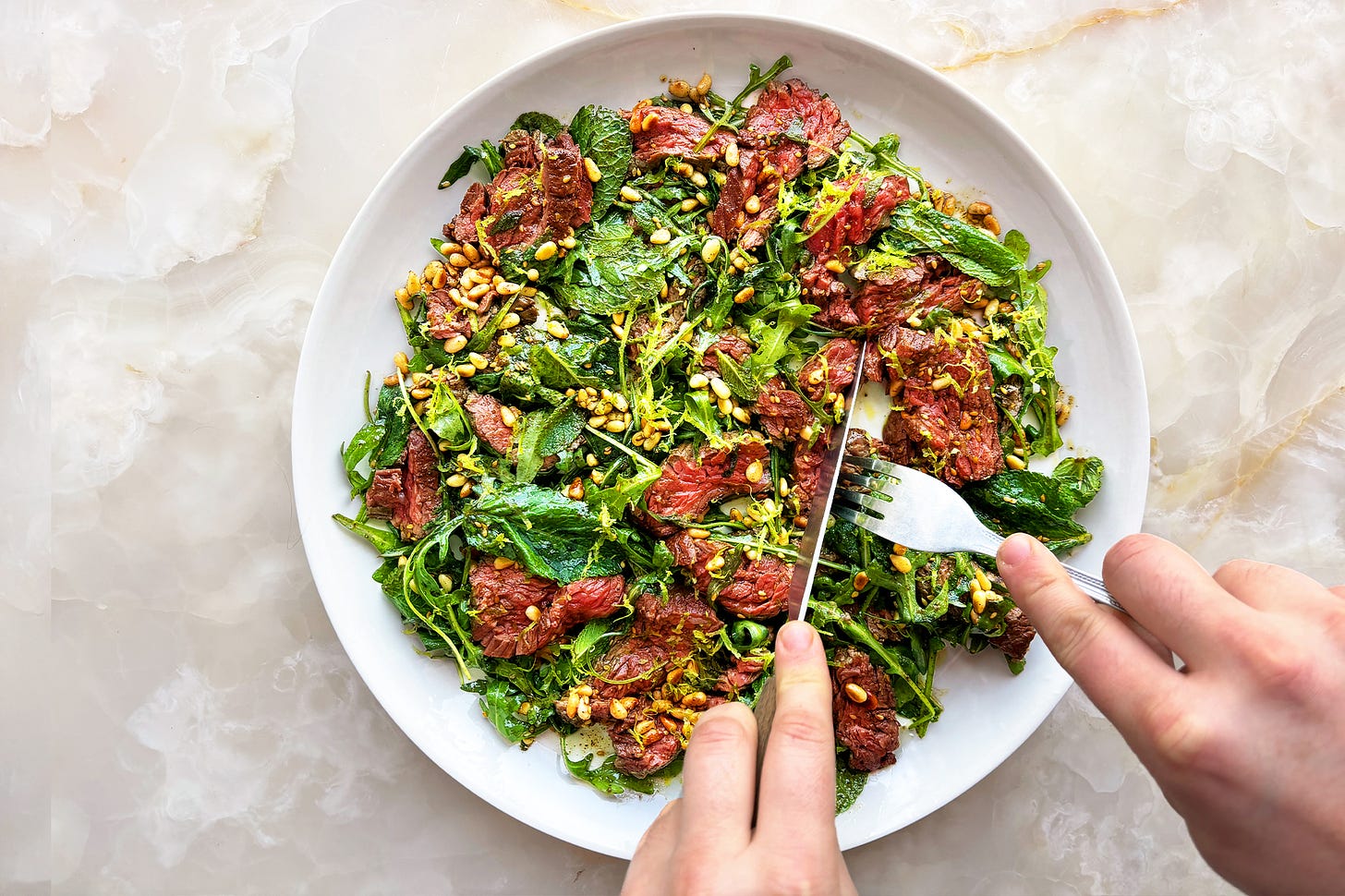Maple-chilli broccoli steaks and a bavette and za’atar salad
At what point is a steak no longer a steak?
At what point is a steak no longer a steak? Here’s where I land.
Steak, as it’s normally understood, is an exercise in restraint. A substantial piece of something, cooked simply. Fire, salt, plus butter if you like.
And yet, unadulterated meat (unadulterated anything) has always felt a little out of place in my kitchen. My food identity is built on vegetables, on flavour layered over flavour, ingredients tumbling together in deliberate disorder. A comfort zone of spices, herbs, and acids.
That’s why when I cook with meat it tends to be part of something more - in meatballs, stews, or koftas. Softened, spiced, carried along by company. It also stretches the meat further, in an economical way.
The same applies to steak. It is rarely straightforward in my kitchen. I “hide” my hunk of meat amongst other delicious things to make it somewhat lighter, fresher. As with today’s bavette, creating a salad around a steak is a direction I often take. There’s definitely enough flavour and texture to go round and still feel that you’re tucking into a meaty flavour bomb, even if it’s covered with leaves.
And so the steak remains.
But what if I lose the meat altogether? Can a vegetable be considered a steak?
I'm not delusional - a broccoli will never be a sirloin, and cauliflower won't fool anyone either. But certain vegetables stand their ground through their structural integrity. Celeriac and portobellos bring that satisfying meaty heft. Broccoli and cauliflower char so well that they demand to be taken seriously.
In Flavour, I made this case with celeriac steaks doused in café de Paris sauce. Cut it thick enough, caramelise it properly, and we’re definitely in steak territory, if not 100% there.
'Steak', then, becomes useful shorthand. Say "cauliflower steak" and everyone immediately pictures that substantial centre-cut slice, cooked hot enough to create that contrast between caramelised exterior and tender middle. We borrow language constantly this way - we ‘roast’ peppers with no roast in sight, shape ‘meatballs’ from lentils, crisp up mushroom "bacon."
That doesn’t mean I’ve sworn off the real thing. A ‘proper’ steak, for me, is an occasional treat—and when I do indulge, I want it to count. Provenance matters. I buy from butchers who can tell you exactly where the animal came from and how it was raised. That’s one of the many reasons I love Lake District Farmers—a collective of more than fifty family farms with genuinely sustainable practices at their heart.
So perhaps we can hold both truths at once. Steak as substance and steak as method - while still honouring what makes vegetables vegetables and meat meat.
And it’s not just vegetable steaks stirring debate. Have you noticed how steak-cooking has turned into performance art? Viral videos of men (it's almost always men) in rugged outdoor settings, wielding knives the size of small swords, slapping huge cuts of meat onto fire-heated stones. It’s all a bit... Daniel Day-Lewis.
Extreme method cooking. Like Day-Lewis insisting on being spoon-fed between takes on My Left Foot, or addressed as Mr. President throughout Lincoln. This may be useful on a film set, but does it enhance the old steak? You judge…
A few steak truths…
There are plenty of excellent how-to guides out there if you want step-by-step steak instructions. Kenji López-Alt has probably influenced more home cooks than anyone. Start there.
Some of my test kitchen colleagues have been cooking steaks for years - on grills, in restaurants, and at home - and they’ve picked up a few hard-won truths worth sharing…
Pat your steak dry before cooking. It's simple thermodynamics: every water droplet you're evaporating is energy wasted, energy that should be creating a crust.
A thermometer will remove any doubt. There is the hand trick - press here for rare, there for medium - it's useful to learn, but honestly, a decent digital thermometer costs less than one good steak and eliminates all guesswork.
Bavette, onglet, and hanger deserve more attention. These cuts scare people because they've had them cooked badly, usually to death. They're more flavourful than many expensive cuts but need to be treated properly. Quick, fierce heat, adequate resting, proper slicing. And always remember to…
Cut against the grain!! Those lines running through your steak are the grain. Cut perpendicular to them, not alongside. You're shortening the fibres, making them easier to chew. With bavette, it's the difference between butter-tender and leather-tough.
Season with fine salt, finish with flaky salt. Fine salt penetrates, seasons throughout, and helps create that crust. Flaky salt at the end gives you those little textural pops.
Each to their own. Some people like well-done steak. Some cuts taste better blue. Medium-rare isn't always the answer. Eat what you enjoy and try different doneness with different cuts.
The steak world is full of dogma – feel free to ignore most of it.
Maple-chilli broccoli steaks
Make sure to let the cut sides of your broccoli properly caramelise before adding any liquid. This creates that lovely contrast: crisp, almost nutty exterior against a tender heart. The maple-chilli butter seeps into all those little floret crevices, creating pockets of sweet heat.
If you can’t find Calabrian chillies, don’t worry. Jarred roasted red peppers and a good pinch of chilli flakes work well too. Make sure your burrata's at room temperature when you tear it, so it melts ever so slightly when you add the steaks on top.
Bavette steak salad with za’atar butter
People often shy away from bavette, fearing its bad rep for toughness. But this underappreciated cut delivers, at half the price, more intense beef flavour than many premium steaks.


